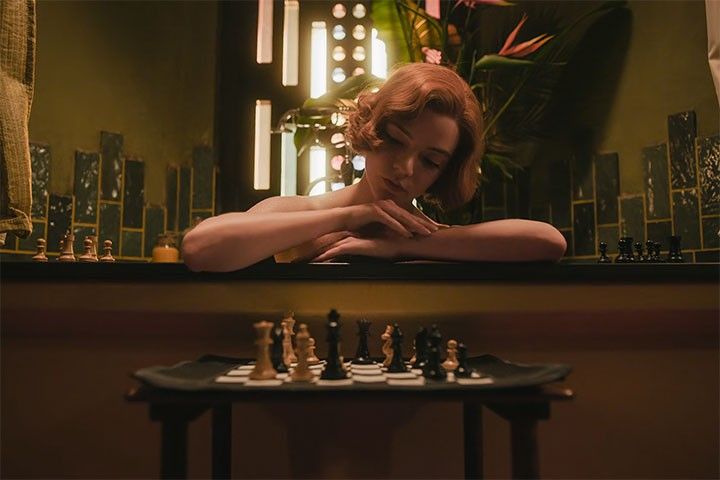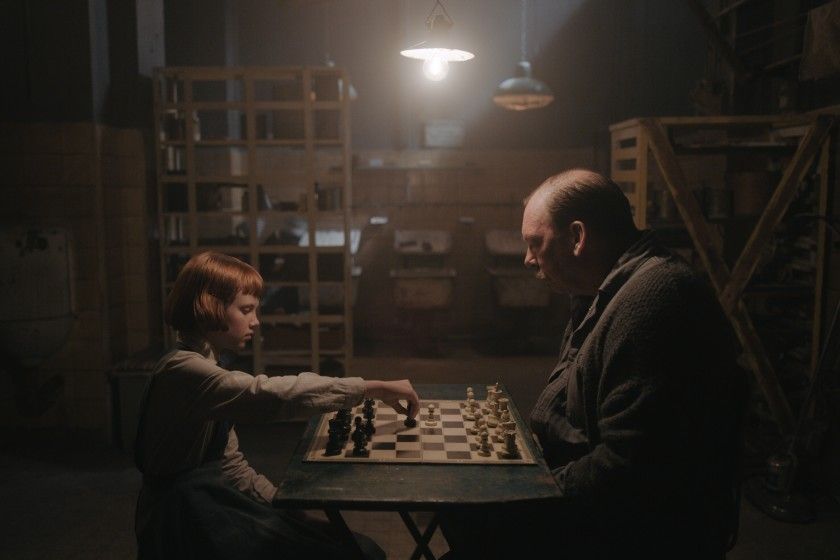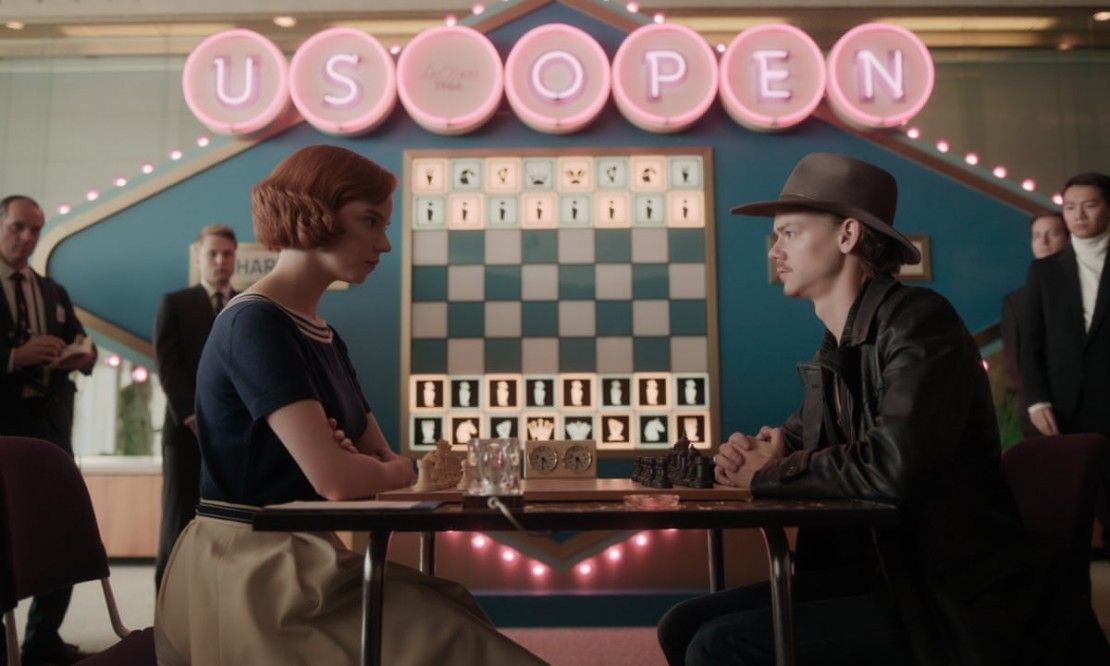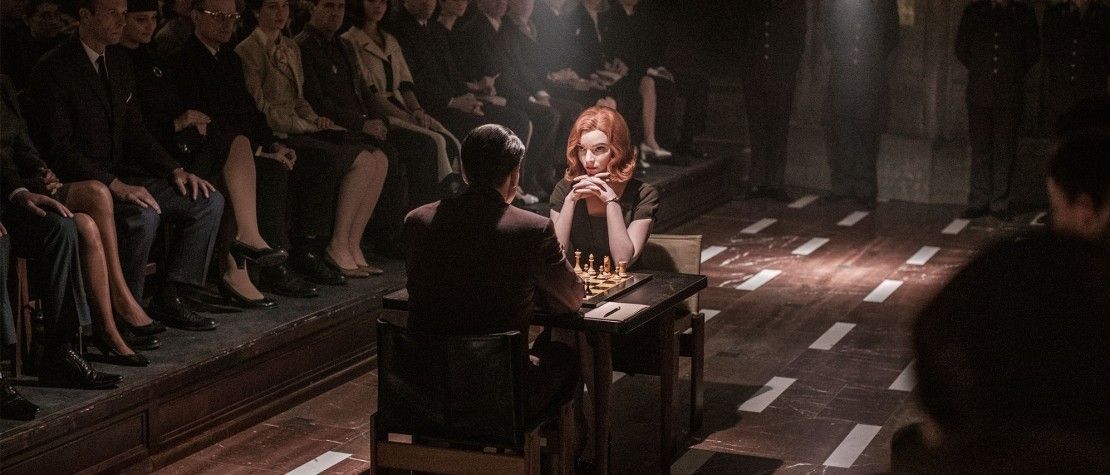
The question that comes to every filmmaker’s mind when trying to make a film or show is, “Is it cinematic enough?”
First, we have to answer the question of what makes something cinematic.
Well... that’s already a tough question to answer. Different aspects of the filmmaking process like cinematography, sound design, writing, or editing could be the answer to what makes something cinematic... but, honestly, the answer is "all of the above."
Something is cinematic when it uses all elements of filmmaking in a variety of ways.
So, how do you take the mundane things in life like talking, sitting, or playing a game of chess and make it cinematic? Since film is a visual medium, it is important to keep the audience invested in the film by making the right choices to further the story visually. To do that, the final project must use the tools given to the filmmaker wisely.
Entertain the Elk breaks down the cinematic beauty in The Queen’s Gambit.
Check out the video:
Visual and editing cues are important when showing scenes where mundane activities are occurring. In the show Sherlock, the visual cues are displayed through various forms of text and intense close-ups to show the audience how Sherlock’s mind works as he investigates.
For The Queen’s Gambit, the visuals and editing cues are varied each time Beth Harmon (Anya Taylor-Joy) plays chess (which is a lot). Each moment feels fresh, like it’s the first time you’re watching Beth play, but the writer and director, Scott Frank, knows how to use his filmmaking toolbelt to drive the story forward.
In the first episode, “Openings,” there are a lot of firsts for Beth. We are introduced to the chessboard from a distance, and a very long lens is used to focus on the pieces that move across the board while everything else stays out of focus. This mimics Beth's interest in the game though she doesn't know anything about it yet. Her curiosity is piqued, and she has her first hallucination (thanks to the help of a tranquilizer pill) of a blank chessboard. The board is blank because she doesn't know the pieces yet, or how they move on the board.
Once she understands the rules after her first game, the game pieces on her visual board appear, and she begins to play in her mind. The next few games she plays, the camera switches between the players with their side of the board still in the frame as the music begins to play for the first time when Beth wins her first game. The cinematic elements start to build on top of each as Beth’s knowledge and skill of chess grow.

From that moment on, the camera doesn’t focus on the board as much as it does the opponent’s face. The beauty of showing the opponent’s face is that the audience gets to see their reaction to Beth’s talent, or the arrogance of the boys who think a girl couldn’t beat them at chess, or the growing crowd of spectators around her.
The tedious sound of the ticking time clock is introduced in the second episode, “Exchanges,” to add intensity to the matches. Cross dissolves are added to show the passage of time in difficult matches.
In the final match against Henry Beltik (Harry Melling), several different elements that have been previously shown to us are at play. The match begins in absolute silence except for the sounds of Henry’s time clock ticking away. When Henry does show up with a coffee in his hand, the camera angle is pointed up at him to show his dominance in the match. Henry yawns and snaps his rebuttal moves to throw Beth off her game, which he does until she steps away to take a tranquilizer and unlocks the visual board in her mind. Beth sees how the game will play out and comes back to the board and the camera angle shifts to show both player’s faces at the same level.
In the third episode, “Double Pawns,” the camera lens floats and lingers over Beth’s face and her perspective of the chessboard as she tries to figure out what moves to make to win a losing game. She is disoriented by the fact that she cannot win, and the camera shows her coming to this conclusion instead of telling us.

Beth begins to play her own mind games in the fourth episode, “Middle Games.” She begins to walk around as she plays the game, making a quick rebuttal as if she has already figured out how the game was going to pan out.
In her first game against Vasily Borgov (Marcin Dorociński), the frame immediately looks away when the white pawn moves forward, letting the nearby radio announcer narrate the rest of the game. The expressions on the audience’s faces are the only way to know that Beth announced a draw because the camera can’t look at the defeat that Beth has to endure.
My favorite chess sequence (and possibly the best chess sequence to ever exist) is in episode five, “Fork.” The entire tournament is played out like a music video, showing a split-screen montage of Beth and Benny Watts (Thomas Brodie-Sangster), making their way into victory after victory while music plays in the background. It isn't until Beth and Benny play each other that the montage stops, the first move is made, and the camera cuts away to both players having a drink in a bar. We only learn how the game ended through their conversation, and we, the audience, have to unlock the board inside our minds if we want to see the game actually played out.

In the same episode and the next, speed chess is added. Their rapid hand movements feel like a choreographed dance as music plays behind them, and the rapid-cuts of the pawns moving to show the frantic pace of the game (again, one of my favorite moments of the show was all of the speed chess).
In Beth’s rematch game against Borgov, the game is shown through the stop motion visual board that is timed to the ticks of the clock. There is no music as the camera quickly shifts from Beth’s face, then the water, then the game board, the audience, and back again to Beth’s face. The whole scene is uncomfortable to watch and disorientating once again as Beth suffers from a hangover. We are distracted by the fact that Beth is supposed to be playing chess just as she is distracted by the fact that she needs water.
In the final episode, there is another montage of victories for Beth, but instead of the camera focusing on her winning, the camera is focused on the audience’s reactions to the girl on the rise. The audience outside the tournament begins to grow and follow each move made as if they are supporting Beth as she makes the choice of which pawn to move.
We hardly see any of the games in her final match; instead, all of the elements used in prior games to show Beth’s unmatched skill have come together. There are the reactions, chart pieces, radio announcer narrating the entire game, and finally, the visual board inside Beth’s head is unlocked as the game plays out above her showing her how to transcend into her place as a grandmaster.

Beth plays over a dozen games of chess through the series, and each time it is exciting to see a board placed on a table.
The Queen’s Gambit made everybody and their mother want to play chess because it was a cinematic experience that brought us visual pleasure. Each game of chess was unique, cinematic, and never boring.
The Queen’s Gambit showed us not only that we normal people will probably never be genius grandmasters (sigh) but that we can turn something seemingly mundane, like playing chess, into a beautifully cinematic moment that moves the story forward.
Did we miss your favorite cinematic moment from The Queen’s Gambit? Let us know below!
Your Comment